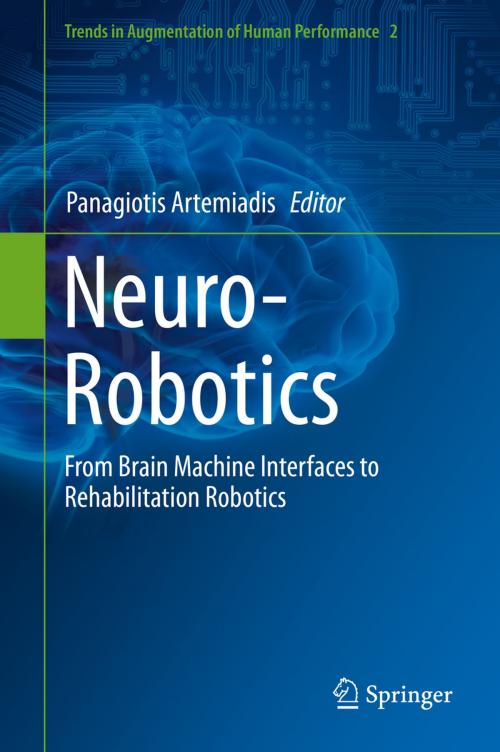Neuro-Robotics
From Brain Machine Interfaces to Rehabilitation Robotics
Nonfiction, Science & Nature, Technology, Automation, Computers, Advanced Computing, Programming, User Interfaces, Health & Well Being, Medical| Author: | ISBN: | 9789401789325 | |
| Publisher: | Springer Netherlands | Publication: | July 10, 2014 |
| Imprint: | Springer | Language: | English |
| Author: | |
| ISBN: | 9789401789325 |
| Publisher: | Springer Netherlands |
| Publication: | July 10, 2014 |
| Imprint: | Springer |
| Language: | English |
Neuro-robotics is one of the most multidisciplinary fields of the last decades, fusing information and knowledge from neuroscience, engineering and computer science. This book focuses on the results from the strategic alliance between Neuroscience and Robotics that help the scientific community to better understand the brain as well as design robotic devices and algorithms for interfacing humans and robots. The first part of the book introduces the idea of neuro-robotics, by presenting state-of-the-art bio-inspired devices. The second part of the book focuses on human-machine interfaces for performance augmentation, which can seen as augmentation of abilities of healthy subjects or assistance in case of the mobility impaired. The third part of the book focuses on the inverse problem, i.e. how we can use robotic devices that physically interact with the human body, in order (a) to understand human motor control and (b) to provide therapy to neurologically impaired people or people with disabilities.
Neuro-robotics is one of the most multidisciplinary fields of the last decades, fusing information and knowledge from neuroscience, engineering and computer science. This book focuses on the results from the strategic alliance between Neuroscience and Robotics that help the scientific community to better understand the brain as well as design robotic devices and algorithms for interfacing humans and robots. The first part of the book introduces the idea of neuro-robotics, by presenting state-of-the-art bio-inspired devices. The second part of the book focuses on human-machine interfaces for performance augmentation, which can seen as augmentation of abilities of healthy subjects or assistance in case of the mobility impaired. The third part of the book focuses on the inverse problem, i.e. how we can use robotic devices that physically interact with the human body, in order (a) to understand human motor control and (b) to provide therapy to neurologically impaired people or people with disabilities.















